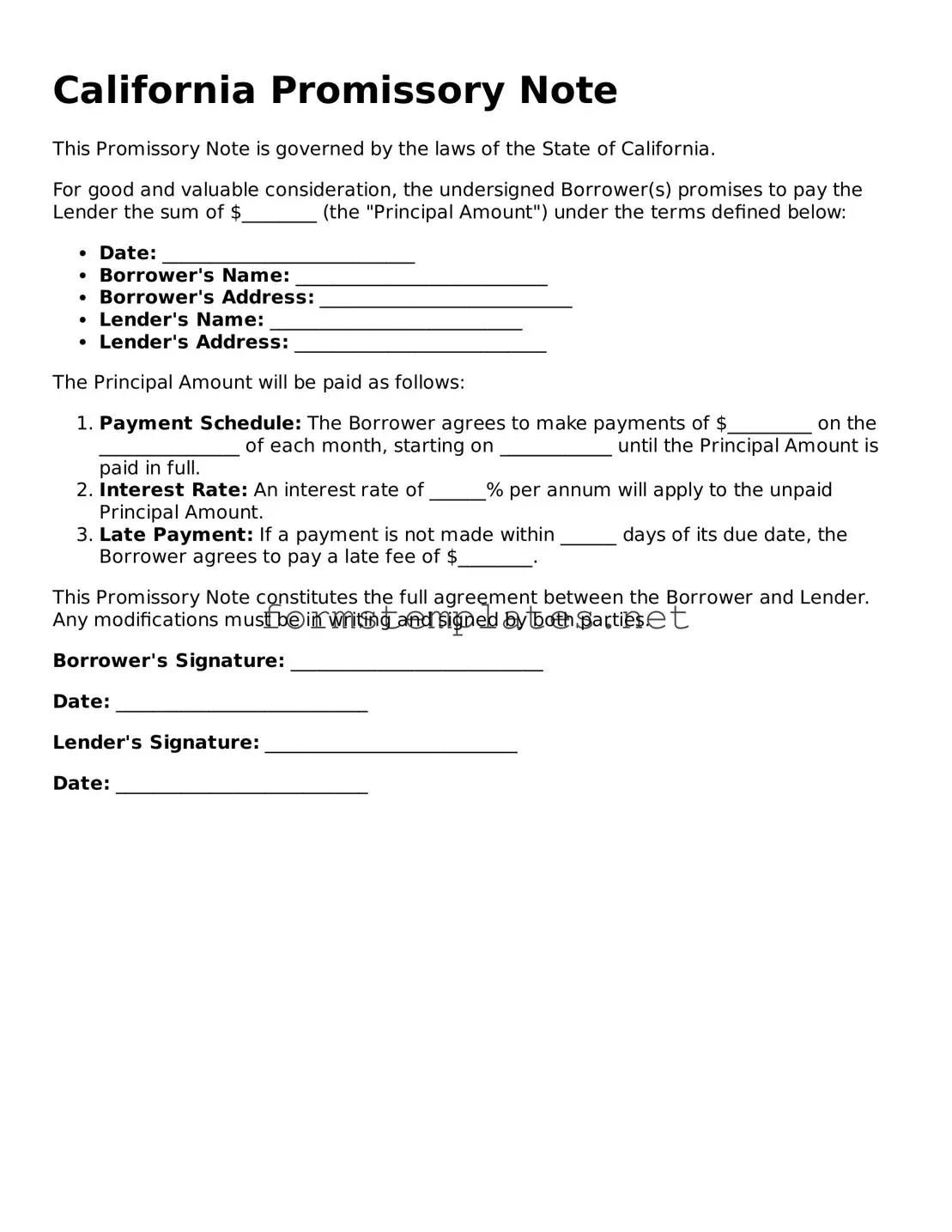California Promissory Note
This Promissory Note is governed by the laws of the State of California.
For good and valuable consideration, the undersigned Borrower(s) promises to pay the Lender the sum of $________ (the "Principal Amount") under the terms defined below:
- Date: ___________________________
- Borrower's Name: ___________________________
- Borrower's Address: ___________________________
- Lender's Name: ___________________________
- Lender's Address: ___________________________
The Principal Amount will be paid as follows:
- Payment Schedule: The Borrower agrees to make payments of $_________ on the _______________ of each month, starting on ____________ until the Principal Amount is paid in full.
- Interest Rate: An interest rate of ______% per annum will apply to the unpaid Principal Amount.
- Late Payment: If a payment is not made within ______ days of its due date, the Borrower agrees to pay a late fee of $________.
This Promissory Note constitutes the full agreement between the Borrower and Lender. Any modifications must be in writing and signed by both parties.
Borrower's Signature: ___________________________
Date: ___________________________
Lender's Signature: ___________________________
Date: ___________________________
